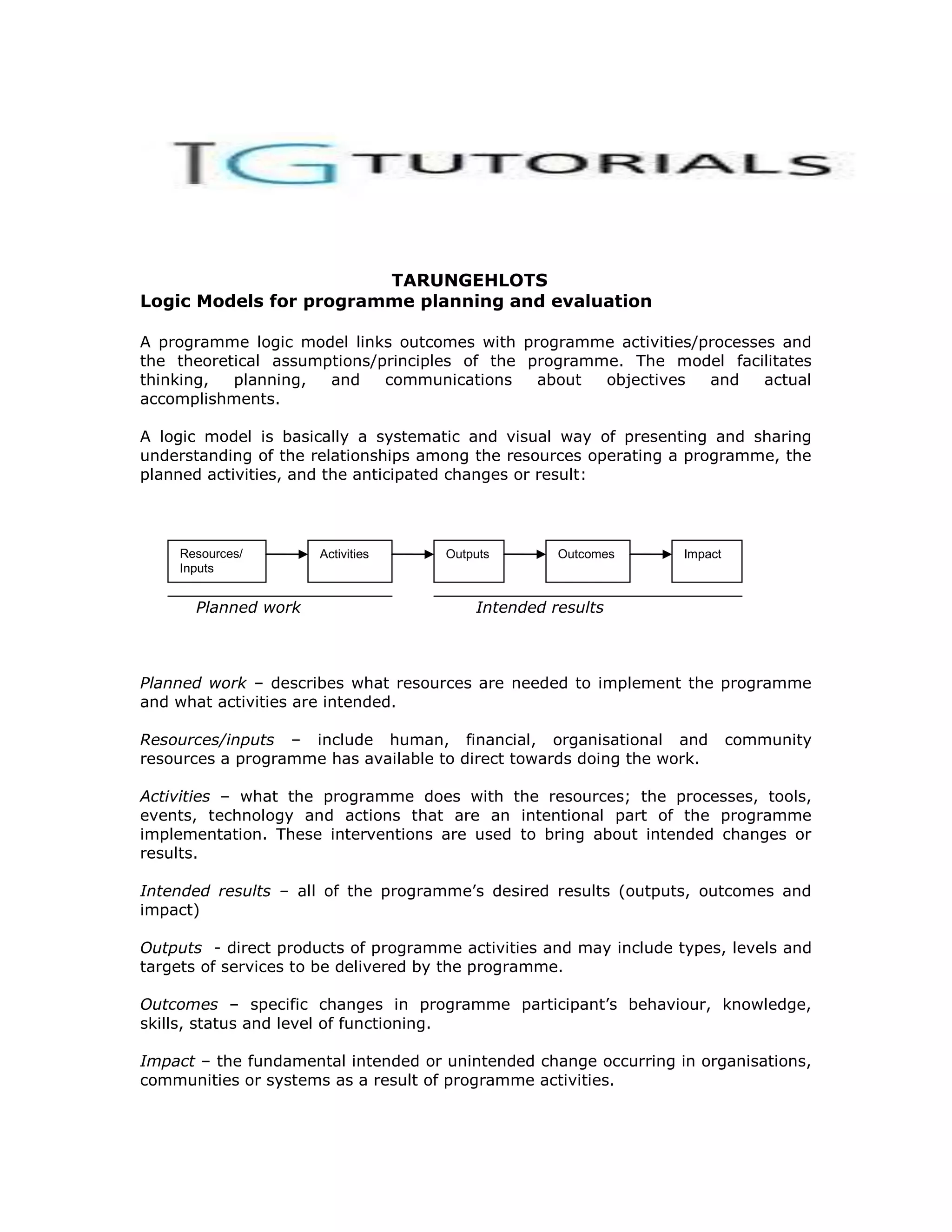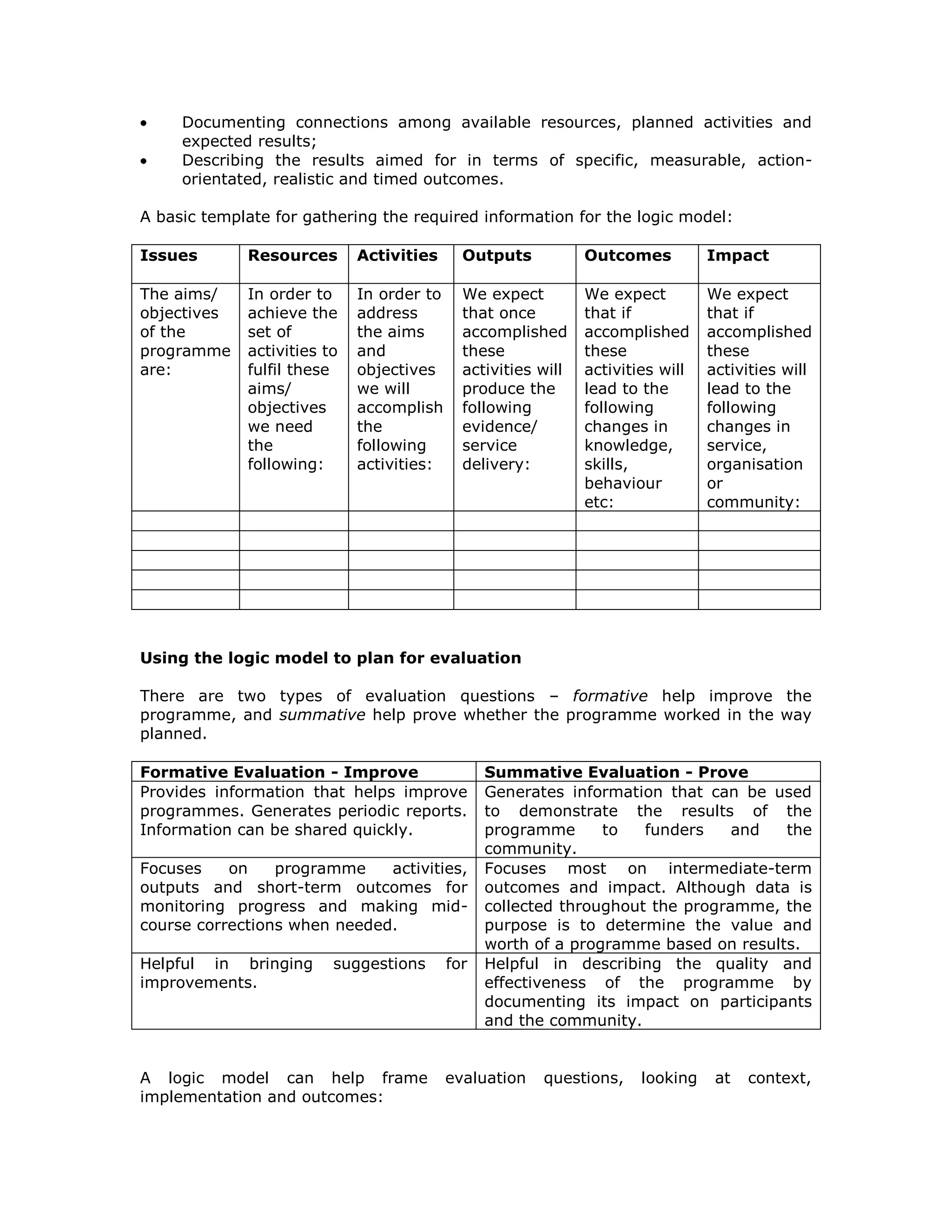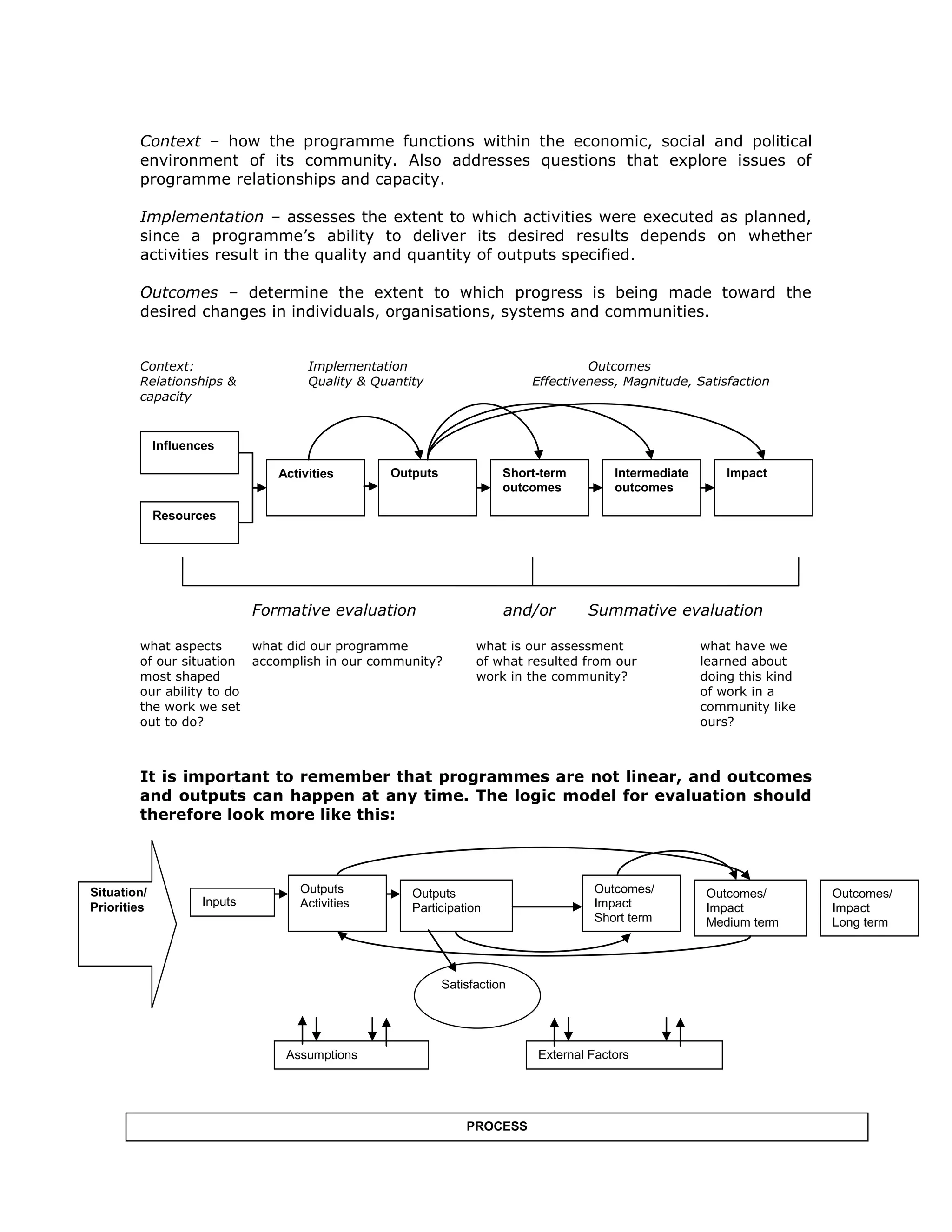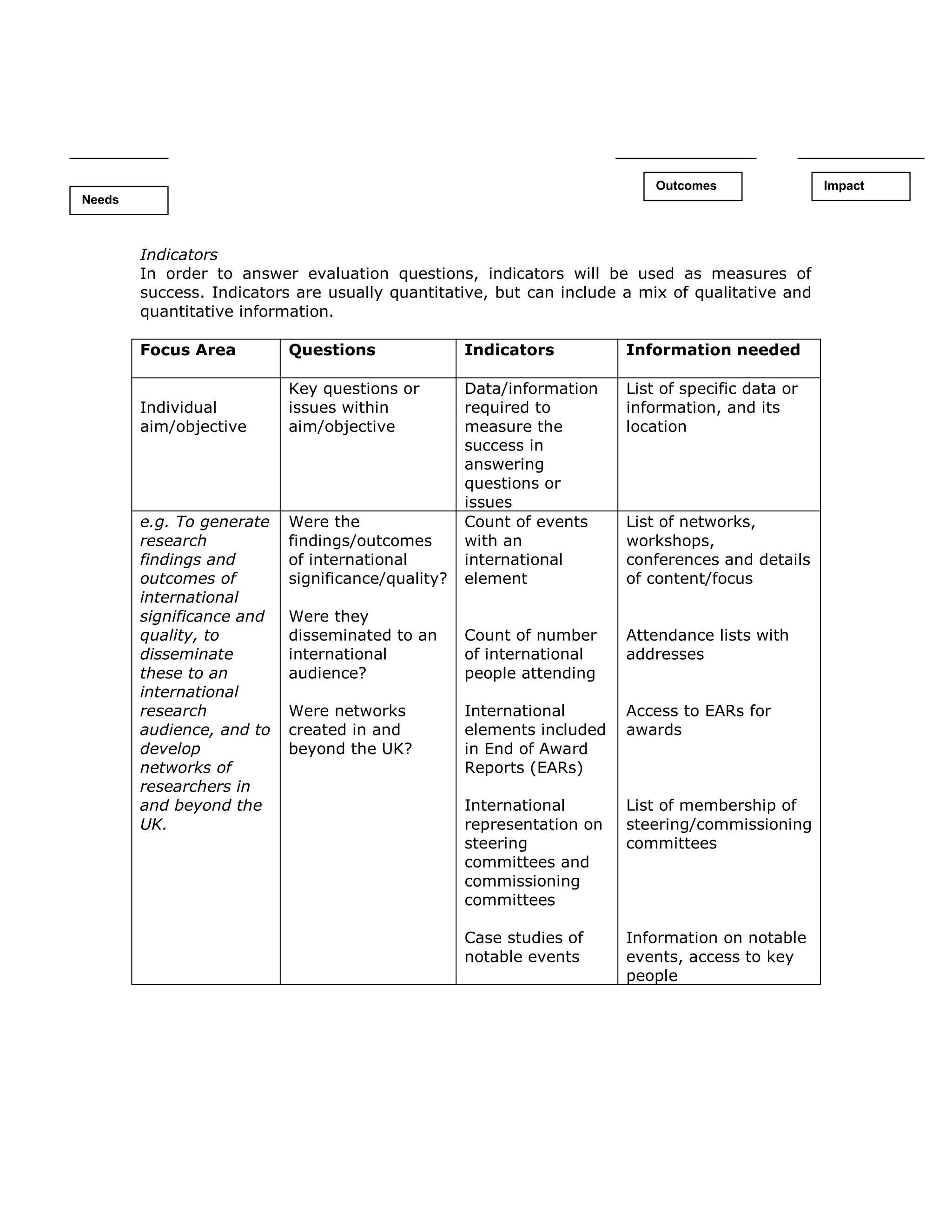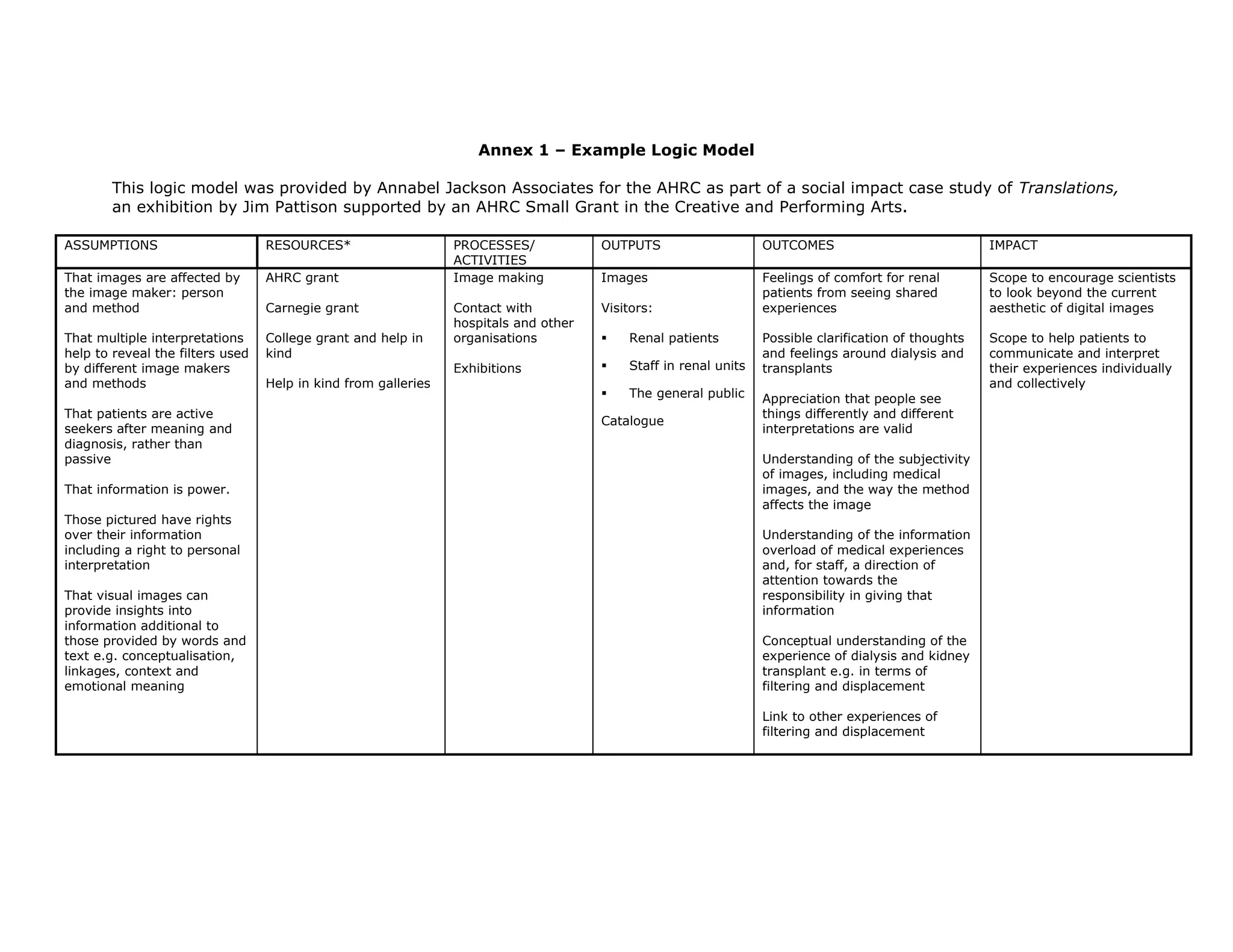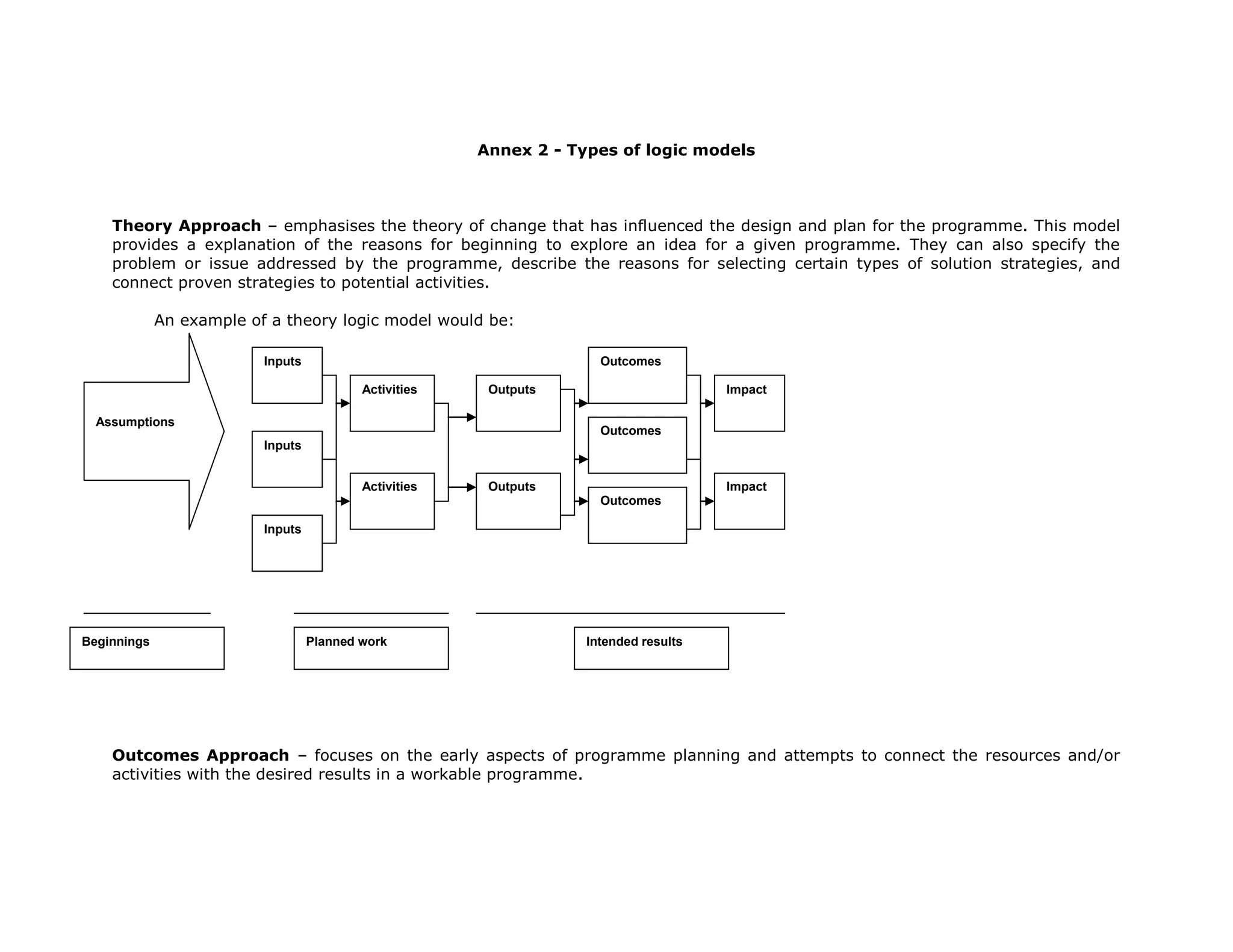The document discusses logic models and their use for program planning and evaluation. It provides:
1) An overview of what a logic model is and how it visually links a program's resources, activities, outputs, and outcomes.
2) Examples of logic model templates that can help design, implement, and evaluate a program.
3) Guidance on developing a logic model by identifying resources, activities, outputs, and short and long-term outcomes.
